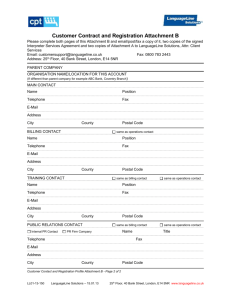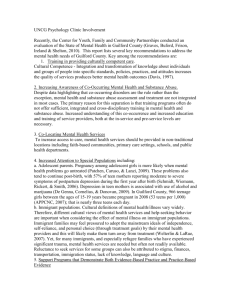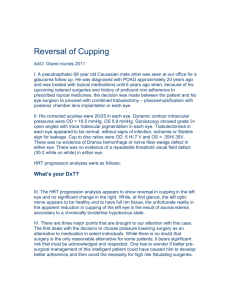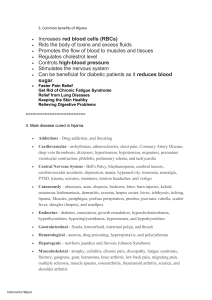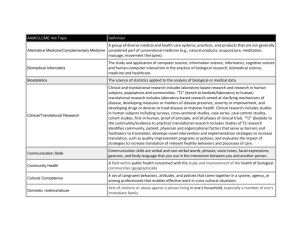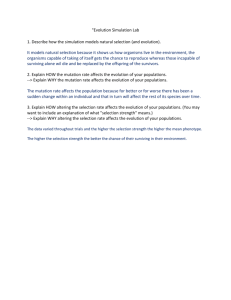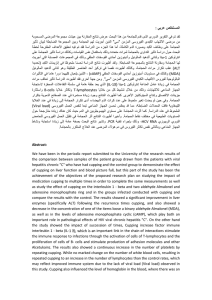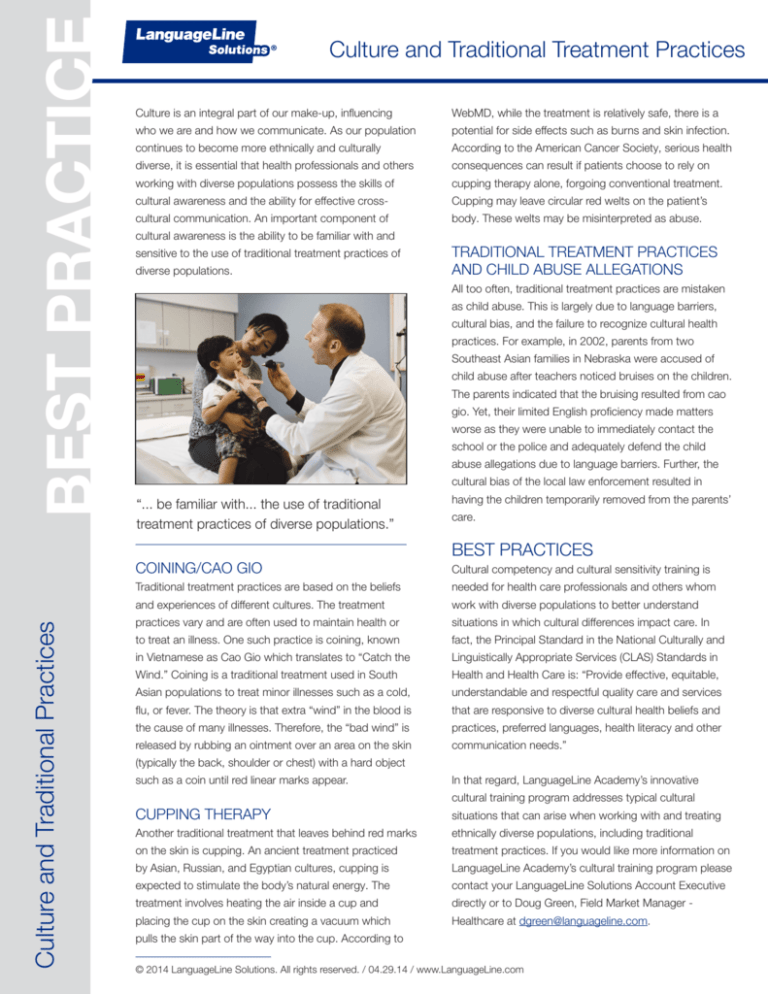
BEST PRACTICE
Culture and Traditional Treatment Practices
Culture is an integral part of our make-up, influencing
WebMD, while the treatment is relatively safe, there is a
who we are and how we communicate. As our population
potential for side effects such as burns and skin infection.
continues to become more ethnically and culturally
According to the American Cancer Society, serious health
diverse, it is essential that health professionals and others
consequences can result if patients choose to rely on
working with diverse populations possess the skills of
cupping therapy alone, forgoing conventional treatment.
cultural awareness and the ability for effective cross-
Cupping may leave circular red welts on the patient’s
cultural communication. An important component of
body. These welts may be misinterpreted as abuse.
cultural awareness is the ability to be familiar with and
sensitive to the use of traditional treatment practices of
diverse populations.
All too often, traditional treatment practices are mistaken
as child abuse. This is largely due to language barriers,
cultural bias, and the failure to recognize cultural health
practices. For example, in 2002, parents from two
Southeast Asian families in Nebraska were accused of
child abuse after teachers noticed bruises on the children.
The parents indicated that the bruising resulted from cao
gio. Yet, their limited English proficiency made matters
worse as they were unable to immediately contact the
school or the police and adequately defend the child
abuse allegations due to language barriers. Further, the
cultural bias of the local law enforcement resulted in
“... be familiar with... the use of traditional
treatment practices of diverse populations.”
COINING/CAO GIO
Culture and Traditional Practices
TRADITIONAL TREATMENT PRACTICES
AND CHILD ABUSE ALLEGATIONS
having the children temporarily removed from the parents’
care.
BEST PRACTICES
Cultural competency and cultural sensitivity training is
Traditional treatment practices are based on the beliefs
needed for health care professionals and others whom
and experiences of different cultures. The treatment
work with diverse populations to better understand
practices vary and are often used to maintain health or
situations in which cultural differences impact care. In
to treat an illness. One such practice is coining, known
fact, the Principal Standard in the National Culturally and
in Vietnamese as Cao Gio which translates to “Catch the
Linguistically Appropriate Services (CLAS) Standards in
Wind.” Coining is a traditional treatment used in South
Health and Health Care is: “Provide effective, equitable,
Asian populations to treat minor illnesses such as a cold,
understandable and respectful quality care and services
flu, or fever. The theory is that extra “wind” in the blood is
that are responsive to diverse cultural health beliefs and
the cause of many illnesses. Therefore, the “bad wind” is
practices, preferred languages, health literacy and other
released by rubbing an ointment over an area on the skin
communication needs.”
(typically the back, shoulder or chest) with a hard object
such as a coin until red linear marks appear.
In that regard, LanguageLine Academy’s innovative
cultural training program addresses typical cultural
CUPPING THERAPY
situations that can arise when working with and treating
Another traditional treatment that leaves behind red marks
ethnically diverse populations, including traditional
on the skin is cupping. An ancient treatment practiced
treatment practices. If you would like more information on
by Asian, Russian, and Egyptian cultures, cupping is
LanguageLine Academy’s cultural training program please
expected to stimulate the body’s natural energy. The
contact your LanguageLine Solutions Account Executive
treatment involves heating the air inside a cup and
directly or to Doug Green, Field Market Manager -
placing the cup on the skin creating a vacuum which
Healthcare at dgreen@languageline.com.
pulls the skin part of the way into the cup. According to
© 2014 LanguageLine Solutions. All rights reserved. / 04.29.14 / www.LanguageLine.com

